4.2: How I Can Stay F.I.T.
- Page ID
- 2385
\( \newcommand{\vecs}[1]{\overset { \scriptstyle \rightharpoonup} {\mathbf{#1}} } \)
\( \newcommand{\vecd}[1]{\overset{-\!-\!\rightharpoonup}{\vphantom{a}\smash {#1}}} \)
\( \newcommand{\id}{\mathrm{id}}\) \( \newcommand{\Span}{\mathrm{span}}\)
( \newcommand{\kernel}{\mathrm{null}\,}\) \( \newcommand{\range}{\mathrm{range}\,}\)
\( \newcommand{\RealPart}{\mathrm{Re}}\) \( \newcommand{\ImaginaryPart}{\mathrm{Im}}\)
\( \newcommand{\Argument}{\mathrm{Arg}}\) \( \newcommand{\norm}[1]{\| #1 \|}\)
\( \newcommand{\inner}[2]{\langle #1, #2 \rangle}\)
\( \newcommand{\Span}{\mathrm{span}}\)
\( \newcommand{\id}{\mathrm{id}}\)
\( \newcommand{\Span}{\mathrm{span}}\)
\( \newcommand{\kernel}{\mathrm{null}\,}\)
\( \newcommand{\range}{\mathrm{range}\,}\)
\( \newcommand{\RealPart}{\mathrm{Re}}\)
\( \newcommand{\ImaginaryPart}{\mathrm{Im}}\)
\( \newcommand{\Argument}{\mathrm{Arg}}\)
\( \newcommand{\norm}[1]{\| #1 \|}\)
\( \newcommand{\inner}[2]{\langle #1, #2 \rangle}\)
\( \newcommand{\Span}{\mathrm{span}}\) \( \newcommand{\AA}{\unicode[.8,0]{x212B}}\)
\( \newcommand{\vectorA}[1]{\vec{#1}} % arrow\)
\( \newcommand{\vectorAt}[1]{\vec{\text{#1}}} % arrow\)
\( \newcommand{\vectorB}[1]{\overset { \scriptstyle \rightharpoonup} {\mathbf{#1}} } \)
\( \newcommand{\vectorC}[1]{\textbf{#1}} \)
\( \newcommand{\vectorD}[1]{\overrightarrow{#1}} \)
\( \newcommand{\vectorDt}[1]{\overrightarrow{\text{#1}}} \)
\( \newcommand{\vectE}[1]{\overset{-\!-\!\rightharpoonup}{\vphantom{a}\smash{\mathbf {#1}}}} \)
\( \newcommand{\vecs}[1]{\overset { \scriptstyle \rightharpoonup} {\mathbf{#1}} } \)
\( \newcommand{\vecd}[1]{\overset{-\!-\!\rightharpoonup}{\vphantom{a}\smash {#1}}} \)
\(\newcommand{\avec}{\mathbf a}\) \(\newcommand{\bvec}{\mathbf b}\) \(\newcommand{\cvec}{\mathbf c}\) \(\newcommand{\dvec}{\mathbf d}\) \(\newcommand{\dtil}{\widetilde{\mathbf d}}\) \(\newcommand{\evec}{\mathbf e}\) \(\newcommand{\fvec}{\mathbf f}\) \(\newcommand{\nvec}{\mathbf n}\) \(\newcommand{\pvec}{\mathbf p}\) \(\newcommand{\qvec}{\mathbf q}\) \(\newcommand{\svec}{\mathbf s}\) \(\newcommand{\tvec}{\mathbf t}\) \(\newcommand{\uvec}{\mathbf u}\) \(\newcommand{\vvec}{\mathbf v}\) \(\newcommand{\wvec}{\mathbf w}\) \(\newcommand{\xvec}{\mathbf x}\) \(\newcommand{\yvec}{\mathbf y}\) \(\newcommand{\zvec}{\mathbf z}\) \(\newcommand{\rvec}{\mathbf r}\) \(\newcommand{\mvec}{\mathbf m}\) \(\newcommand{\zerovec}{\mathbf 0}\) \(\newcommand{\onevec}{\mathbf 1}\) \(\newcommand{\real}{\mathbb R}\) \(\newcommand{\twovec}[2]{\left[\begin{array}{r}#1 \\ #2 \end{array}\right]}\) \(\newcommand{\ctwovec}[2]{\left[\begin{array}{c}#1 \\ #2 \end{array}\right]}\) \(\newcommand{\threevec}[3]{\left[\begin{array}{r}#1 \\ #2 \\ #3 \end{array}\right]}\) \(\newcommand{\cthreevec}[3]{\left[\begin{array}{c}#1 \\ #2 \\ #3 \end{array}\right]}\) \(\newcommand{\fourvec}[4]{\left[\begin{array}{r}#1 \\ #2 \\ #3 \\ #4 \end{array}\right]}\) \(\newcommand{\cfourvec}[4]{\left[\begin{array}{c}#1 \\ #2 \\ #3 \\ #4 \end{array}\right]}\) \(\newcommand{\fivevec}[5]{\left[\begin{array}{r}#1 \\ #2 \\ #3 \\ #4 \\ #5 \\ \end{array}\right]}\) \(\newcommand{\cfivevec}[5]{\left[\begin{array}{c}#1 \\ #2 \\ #3 \\ #4 \\ #5 \\ \end{array}\right]}\) \(\newcommand{\mattwo}[4]{\left[\begin{array}{rr}#1 \amp #2 \\ #3 \amp #4 \\ \end{array}\right]}\) \(\newcommand{\laspan}[1]{\text{Span}\{#1\}}\) \(\newcommand{\bcal}{\cal B}\) \(\newcommand{\ccal}{\cal C}\) \(\newcommand{\scal}{\cal S}\) \(\newcommand{\wcal}{\cal W}\) \(\newcommand{\ecal}{\cal E}\) \(\newcommand{\coords}[2]{\left\{#1\right\}_{#2}}\) \(\newcommand{\gray}[1]{\color{gray}{#1}}\) \(\newcommand{\lgray}[1]{\color{lightgray}{#1}}\) \(\newcommand{\rank}{\operatorname{rank}}\) \(\newcommand{\row}{\text{Row}}\) \(\newcommand{\col}{\text{Col}}\) \(\renewcommand{\row}{\text{Row}}\) \(\newcommand{\nul}{\text{Nul}}\) \(\newcommand{\var}{\text{Var}}\) \(\newcommand{\corr}{\text{corr}}\) \(\newcommand{\len}[1]{\left|#1\right|}\) \(\newcommand{\bbar}{\overline{\bvec}}\) \(\newcommand{\bhat}{\widehat{\bvec}}\) \(\newcommand{\bperp}{\bvec^\perp}\) \(\newcommand{\xhat}{\widehat{\xvec}}\) \(\newcommand{\vhat}{\widehat{\vvec}}\) \(\newcommand{\uhat}{\widehat{\uvec}}\) \(\newcommand{\what}{\widehat{\wvec}}\) \(\newcommand{\Sighat}{\widehat{\Sigma}}\) \(\newcommand{\lt}{<}\) \(\newcommand{\gt}{>}\) \(\newcommand{\amp}{&}\) \(\definecolor{fillinmathshade}{gray}{0.9}\)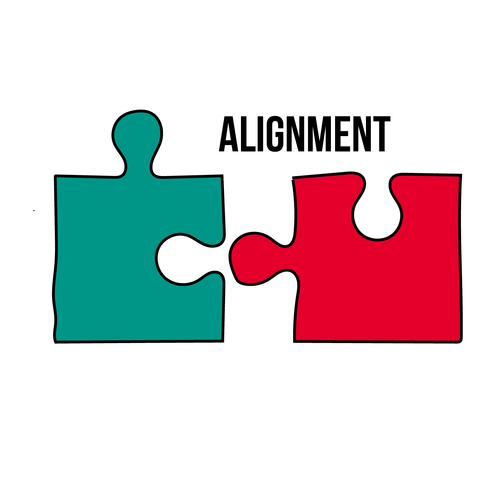
National Health Education Standards (NHES)
- 6.12.1-6.12.4 Set and implement goals and plans to improve health, such as physical activity.
Wellness Guidelines
- Increase frequency of physical activity.
- Decrease sedentary behavior

- Instruction: In a group or think-pair-share format, have participants discuss the following questions. Acknowledge those who have progressed toward their goal(s) and encourage anyone who wants to change or modify their goal to get 1:1 support.
- Share: Let’s discuss our SMART Goals.
- How is it going with your current SMART goal?
- What are some ways you can improve progress towards your goal? (Grows)
- What are some ways you are doing well with progress towards your goal? (Glows)
GUIDELINE: Increase Frequency of Physical Activity and Decrease Sedentary Behavior
- Share: What guideline do you think is related to today’s lesson? Who has a SMART Goal related to this guideline?
- Instruction: Select one activity.
- Guideline Popcorn: The group lists all 8 guidelines rapidly in popcorn format.
- Guideline Charades: Divide participants into groups and assign each a guideline. Each group has to silently act out the guideline for the rest to guess.
- Two Truths and One Lie:
- Truth 1: Regular physical activity decreases anxiety and stress.
- Truth 2: Regular physical activity increases self-esteem.
- Lie: Regular physical activity makes you more tired during the day.
- Questions to discuss and/or journal:
- What are your favorite exercises to do?
- Where do you usually exercise?
- What are some exercises you want to try?
- How do you usually feel after exercising?
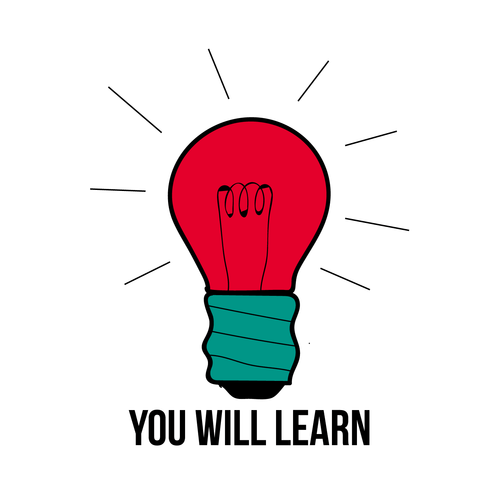
- How to include different types and levels of intensity of physical activity into your weekly routine.

- Worksheets
- Slide presentation
- Exercises printed on pieces of paper and container
- Everyday items for exercise demonstration (such as a chair, two tennis balls, two jump ropes, two yoga mats, two canned food, two textbooks, the wall, a desk, etc.)
- Neighborhood map showing local parks or walking paths
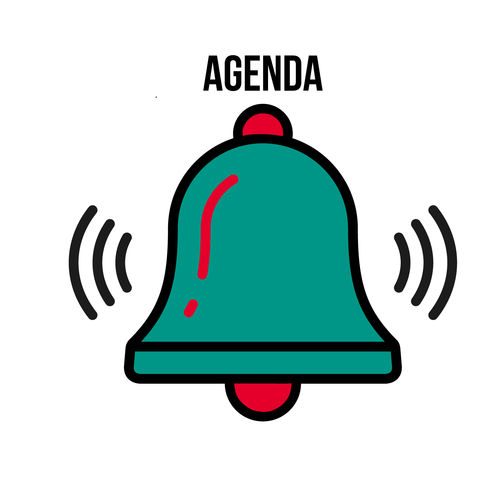
- Do Now
- Stay F.I.T.
- Exercise Charades
- Exercise Everywhere
- Exit Ticket
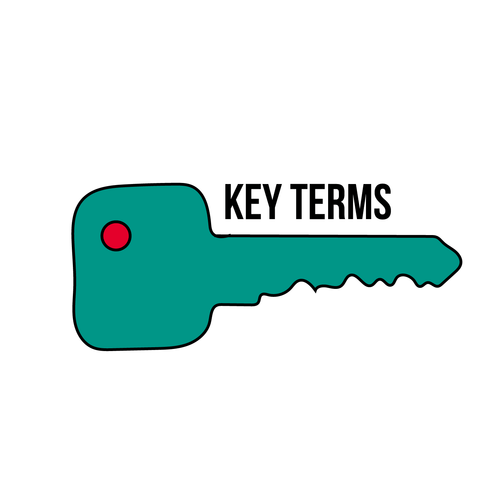
[As defined by HHS, 2008; Merriam-Webster Dictionary, n.d.]
- Fitness: Ability to do daily tasks with energy and without getting tired
- Physical Activity: Any movement that requires energy. In other words, any movement one does is actually physical activity.
- Exercise: Movement of the body that uses energy that is planned, structured, repetitive, and purposive usually to improve fitness.
- Frequency: Number of times an exercise or activity is performed and expressed in sessions, episodes, or bouts per week.
- Intensity: How much work (force, weight, or the magnitude of the effort) is required to perform any physical activity or exercise.
- Repetition: Number of times a person lifts a weight for example.
- Duration: How long (how much time) you spend doing an activity in one session.
- Aerobic: Exercises when the body’s large muscles move in a rhythmic manner for a sustained period of time (similar to cardiorespiratory endurance).
- Muscle-Strengthening: Exercises that make muscles do more work than usual by holding against an applied force or weight.
- Bone-Strengthening: Exercises that produces an impact or tension force on the bones.
- Flexibility: Exercises that improve the ability of a joint to move through its full range of motion.
- Metabolic Equivalent (MET): The MET is a unit used to estimate the amount of oxygen used by the body during physical activity. The harder the body works, the higher the MET.
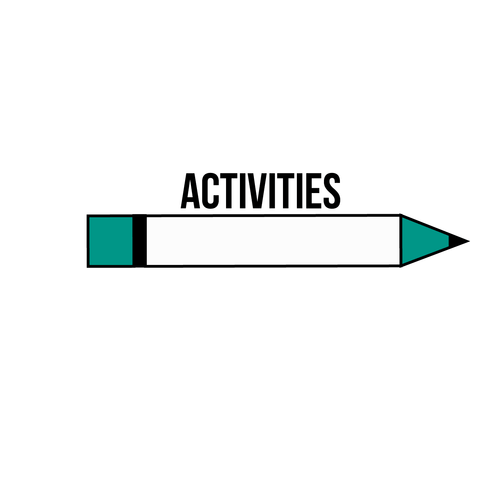
Do Now: Get in Shape
- Instruction:
- Have participants write on their worksheet or share out loud the following question(s):
- Out of everyone you know, who is the most fit? What makes them fit? What do they do to stay fit?
- Have participants write on their worksheet or share out loud the following question(s):
- Share:
- First, what does fitness mean? It is the ability to do daily tasks with energy and without getting tired. How can you improve your fitness? By doing exercise.
- What is exercise vs physical activity? Exercise is a movement of the body that uses energy that is planned, structured, repetitive, and purposive. Physical Activity is any bodily movement produced by skeletal muscles that require energy expenditure.
- Regular exercise is important for staying fit, being healthy, and feeling your best.
- While you may think that exercise has to be sprinting or playing a sport, that’s simply not true! There are many different types and levels of intensity of exercise, and today we will be learning about some of them.
- It is recommended that you try lots of different kinds of exercises to help you stay fit.
Good to Know: Physical Activity Charades
 Image from HealthCorps
Image from HealthCorps- Set Up:
- Write out or print a variety of physical activities listed in the chart below and cut them individually.
- Place them into a container and have each participant or in groups (depending on the size of the group) draw a piece of paper.
- Share:
- It is important for your overall fitness and sense of well-being to have an active lifestyle and establish an exercise routine doing a variety of activities that you like throughout the week.
- There are three types of physical activities that will work out your whole body: aerobic, strengthening, and flexibility.
- Aerobic activities are when the body’s large muscles move in a rhythmic manner for a sustained period of time. There are two types of strengthening activities- muscle and bone.
- Muscle-strengthening makes muscles do more work than usual by holding against an applied force or weight. These activities increase muscle strength, power, endurance, and mass.
- Bone-strengthening activities produce an impact or tension force on the bones. These activities promote bone growth and strength.
- Flexibility activities improve the ability of a joint to move through its full range of motion. It also helps reduce your chance of injury and repairs overstrained muscles (HHS, 2008).
- Share:
- We are going to play physical activity charades.
- When it’s your turn, silently act out what activity is on your piece of paper.
- The rest of the group will guess what physical activity it is and whether it is an aerobic, strengthening, or flexibility activity.
- Remember, an activity can be in more than one category

Image created by HealthCorps staff: Deborah Chen & Rudhi Gokhale
Source: U.S. Department of Health and Human Services. (2008). 2008 Physical Activity Guidelines for Americans. Retrieved From: https://health.gov/paguidelines/pdf/paguide.pdf
Real World Relevance: Stay FIT
- Share:
- A handy acronym to remember when planning your exercise for the week is F.I.T., which stands for Frequency, Intensity and Time
- Frequency is the number of times an exercise or activity is performed and expressed in sessions, episodes, or bouts per week. Exercise at least 10 minutes at a time throughout the week (HHS, 2008).
- Intensity is how hard you exercise. The more intense, the less time needed to spend, the less intense, the more time needed.
- There are three levels of intensity (CDC, 2015).
- How do you know how intense a physical activity is? Try the talk test. When doing moderate-intensity activities you can talk, but not sing. When doing vigorous-intensity activities, you shouldn’t be able to say more than a few words without pausing to catch your breath (CDC, 2015).
- MET is a unit used to estimate the amount of oxygen used by the body during physical activity. The harder the body works, the higher the MET. 1 MET= the energy (oxygen) used while sitting quietly [CDC, 2017].
- Light Intensity: Activity that is usually less 3 on a scale of 0 to 10.
- Moderate Intensity: Activity that is usually between 3 and 6 on a scale of 0 to 10.
- Vigorous Intensity: Activity that is usually higher than 6 on a scale of 0 to 10.

Image created by HealthCorps staff: Deborah Chen & Rudhi Gokhale
Source: U.S. Department of Health and Human Services. (2008). 2008 Physical Activity Guidelines for Americans. Retrieved From: https://health.gov/paguidelines/pdf/paguide.pdf
- Time refers to the duration (how long) of doing an aerobic activity and also repetition of doing muscle and/or bone strengthening activities (for example, the number of times a person lifts a weight). Duration is the length of time in which an activity or exercise is performed and expressed in minutes.
- Activities can be at least 10 minutes at a time throughout the week (HHS, 2008).

Image created by HealthCorps staff: Deborah Chen and Rudhi Gokhale
Source: U.S. Department of Health and Human Services. (2008). 2008 Physical Activity Guidelines for Americans. Retrieved From: https://health.gov/paguidelines/pdf/paguide.pdf
Hands On: Exercise Everywhere
- Set up:
- Identify (or bring) everyday items – a chair, two tennis balls, two jump ropes, two yoga mats, two canned food, two textbooks, the wall, a desk, etc.
- Share:
- You do not need a gym membership or expensive equipment to exercise. Where else can you work out?
- Community park
- Neighborhood
- School
- Home
- What are some ways you can work out without a trainer or expensive equipment?
- Watch and follow exercise programs on YouTube to move more during screen time.
- Ask friends to work out with you
- Join a community/intramural/school sports team
- Walk/bike to places instead of driving
- Use everyday items as exercise equipment
- Decrease your screen time by setting a time limit for being on your computer, television, and cell phone.
- Instead of sitting down while working or watching television you can stand for five (5) to ten (10) minutes or use objects to exercise with around you.
- We are going to learn how to exercise everywhere with everyday items.
- You do not need a gym membership or expensive equipment to exercise. Where else can you work out?
- Instruction:
- Split participants into groups.
- Each group will be assigned to create a workout with the item(s) they are assigned.
- After a certain amount of time (suggested 5 to 15 minutes), signal (stopping of music playing, gong, whistle, etc.) for groups to rotate clockwise. Repeat until each group has created a workout with all the item(s).
- Groups will showcase the final workout they created.
- The group will answer the following questions:
- What type of physical activity do you think this is? Aerobic, strengthening or flexibility
- Example: Chair – tricep dips (strengthening), stretching (flexibility); tennis balls – catch (aerobic), foot massage (flexibility); jumping ropes – jump rope (aerobic), back stretch (flexibility); two canned food or textbooks – mimic weights such as bicep curl, squats, ab twists (strengthening); the wall – wall sits (strengthening), stretching (flexibility); a desk – push-ups (strengthening), stretching (flexibility).
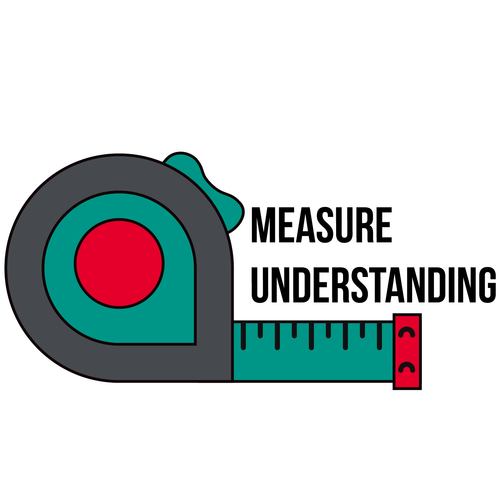
Exit Ticket:
- Instruction:
- Have participants write on their worksheet or share out loud the following question(s).
- How are you going to stick with your exercise routine?
- Like it: What do you like to do?
- Increments: How can you break up your physical activity time?
- Variety: How are you going to mix it up and try all types of exercise (aerobic, strengthening and flexibility)?
- How are you going to stick with your exercise routine?
- Have participants write on their worksheet or share out loud the following question(s).
Bibliography
- Centers for Disease Control and Prevention. (2015). Measuring physical activity. Retrieved From: www.cdc.gov/physicalactivity/basics/measuring/index.html
- Centers for Disease Control and Prevention. (2015). How much physical activity do children need? Retrieved From: www.cdc.gov/physicalactivity/basics/children/index.htm
- Centers for Disease Control and Prevention. (2017). Physical activity for arthritis. Retrieved From: www.cdc.gov/arthritis/basics/physical-activity-overview.html
- Patel, H. et al. (2017). Aerobic vs anaerobic exercise training effects on the cardiovascular system. World J. Cardiol. 9(2): 134-8.
- Willis, LH. et al. (2012). Effects of aerobic and/or resistance training on body mass and fat mass in overweight or obese adults. Journal of Applied Physiology 113(12): 1831-7.
- U.S. Department of Health and Human Services. (2008). 2008 Physical Activity Guidelines for Americans. Retrieved From: https://health.gov/paguidelines/pdf/paguide.pdf

- Optional Good to Know Activity:
- Share: What’s the difference between aerobic and anaerobic? During aerobic exercise, the body uses oxygen for energy and burns more calories from fat than carbs because do not need the more immediate carbohydrates (Willis et al., 2012). It is longer duration & low intensity (e.g. marathoner). What are some examples of aerobic exercises? Responses may include:
- Rowing
- Cycling/biking
- Walking/slow jogging
- Cross country
- Swimming
- Dancing
- Share: Meanwhile, for anaerobic, the body produces energy without oxygen. Burns more calories from carbohydrates than fat (because carbohydrates are more immediate). It builds muscle and is shorter duration & higher intensity (e.g. sprinter). Muscles don’t receive enough oxygen to maintain high-intensity exercise so it will use glycogen (sugar) from the carbohydrates consumed. However, you can’t sprint for a long time (Patel, 2017). What are some examples of anaerobic exercises? Responses may include. Responses may include:
- Sprinting (running, swimming, or biking)
- High-intensity sports (soccer, tennis, basketball, etc.)
- Share: What’s the difference between aerobic and anaerobic? During aerobic exercise, the body uses oxygen for energy and burns more calories from fat than carbs because do not need the more immediate carbohydrates (Willis et al., 2012). It is longer duration & low intensity (e.g. marathoner). What are some examples of aerobic exercises? Responses may include:
- Optional Good to Know Activity:
- Optional Real World Relevance Activity:
- Instruction: Illustrate the difference between the 3 levels of activity. Play 3 songs for 1 minute each starting with a classical music slow tempo song then to a moderate beat song then to a faster song to illustrate vigorous activity. During each minute, lead the participants in doing an exercise from the three categories.
- Optional Hands-On Activities:
- Jumping Jack Tag (Freeze Tag: If outdoor space is available, take students outside to play some freeze tag. However, instead of students freezing when tagged they have to complete a certain number of jumping jacks or another exercise. Note: To be mindful of inappropriate touching or roughness you could use a light ball to tag peers versus hands.
- The Every Time 'I say'... Game: Select a word or words for the entire length of the class or at the end and have a movement for each word. For example, you could say "Every time I say the word exercise do 10 jumping jacks." Put a student in charge to pay attention to when you say your trigger words.
- So You Think You Can Dance Competition: Modeled after the TV show So You Think You Can Dance. This activity will depend on students’ attitudes and enthusiasm towards dancing. Split the class into groups; students who really do not want to participate can be judges.
- Out on the Track: Take students outdoors and set up relay teams. Come up with activities that are physically challenging, but not too strenuous or difficult. Everyone should be able to participate, even if they are not quite in shape. There can be walking races, cheering squads, or dance routines to remind students that all movement counts as exercise.
- Walking Challenge: Challenge participants to Walk Across America which is 5,4000,000 steps. Have your classes compete against each other for the duration of this unit or semester and track their steps with pedometers. The class that reaches the goal or is the closest wins a prize. You can start the competition off by taking your classes on the track to start walking. If students are given pedometers, have each student track his/her steps on their own, and report results to the class in the following weeks. Keep a chart in the classroom so students can record their steps each week. You can download the tracking sheets at this website.
- Digital Exercise: Take your cell phones out and search for exercise videos that look interesting to you. Choose six: three at different levels of intensity and three videos that have different time commitments (i.e, 15 minutes, 30 minutes, 45 minutes).
This lesson was created in partnership with Albert Einstein College of Medicine Department of Epidemiology and Population Health with funding support by the National Institutes of Health NIDDK Grant R01DK097096.

